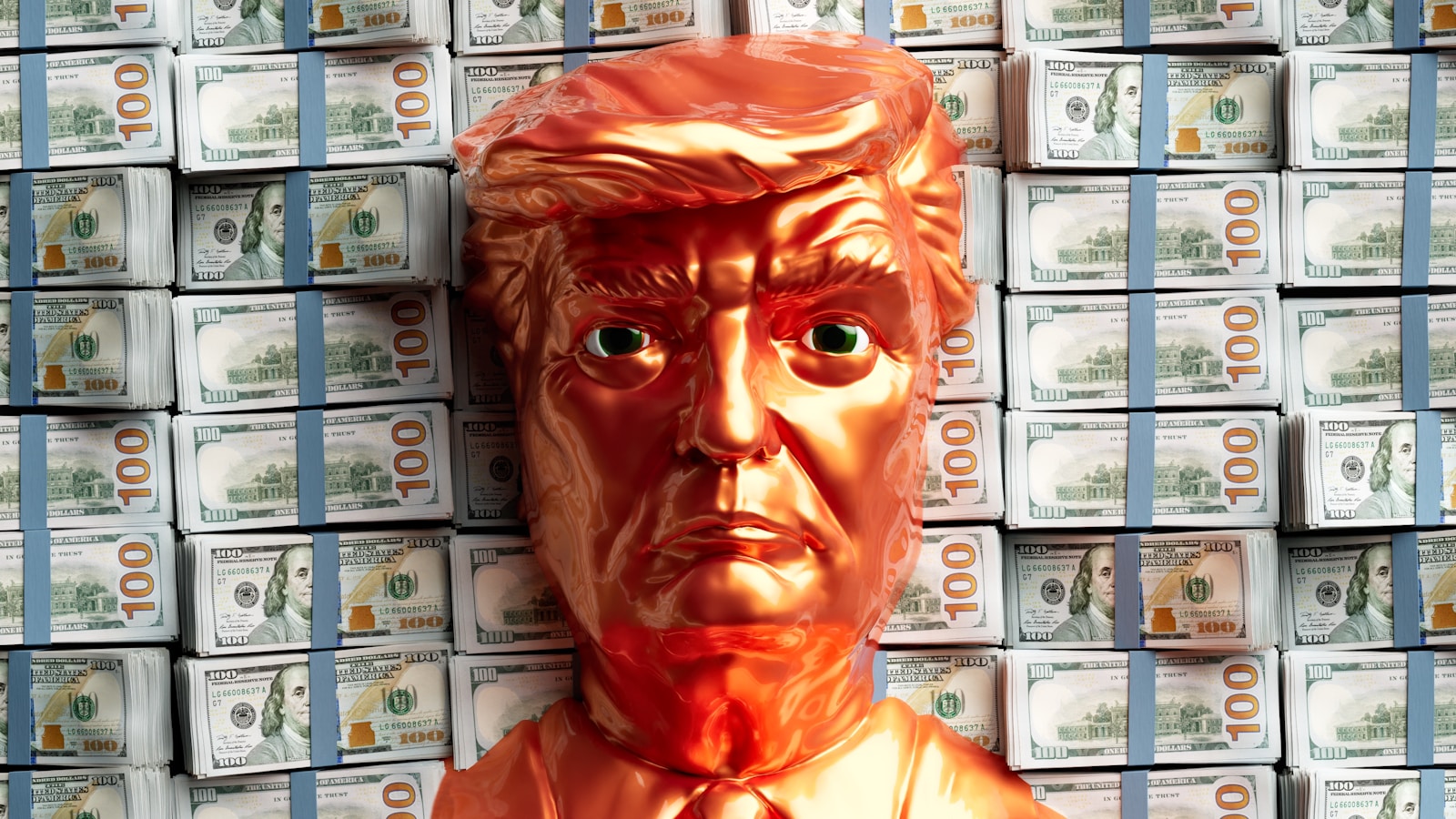Tariffs In Turmoil And India’s Strategic Crossroads

The year 2025 saw Donald Trump’s return to the United States (US) presidency and the initiation of aggressive tariff policies. The US has imposed a 10% baseline tariff on most imports, with greater tariffs on imports from selected countries, e.g., China, which faces a staggering 145% tariff. China has recently retaliated with 125% tariffs on targeted American goods. This tariff war impacts global markets, including India. It has given rise to uncertainties and volatility in global markets, which has compelled central banks in India to cut interest rates to prevent potential economic downturns.
Recent tariff wars mark a departure from the post-World War II consensus that championed free trade, with the USA in the vanguard. Today, it is giving way to a structural realignment in international commerce.
Table of Contents
Tracing The Origins Of U.S. Tariff Policy
During the 1960s, the European Union imposed tariffs on the United States of America’s (USA) poultry exports, prompting the USA to retaliate with a 25% tax on imported light trucks. Thus, engaging in a “chicken war[1] This tariff war reshaped the American auto industry and set a lasting example of using tariffs as economic tools.
Decades later, under the Donald Trump regime, echoes of the seemingly parochial “Chicken War” resound with uncanny familiarity, as if global trade has come full circle, ensnared once again in a cycle of retaliatory tariffs and economic brinkmanship, but this time with greater scale and consequences.
The New Tariff War Era
Impacts on India can be severe, and its position as the fifth largest economy in the world and a significant player in global trade can be threatened by these retaliatory tariffs, particularly in sectors like steel, pharmaceuticals, and chemicals.
Decoding Tariffs: Instruments Of Influence
Tariffs are different from sanctions, which have a broader implication surpassing protection of domestic trade interests. Sanctions may be defined as political measures to avoid trade for the purpose of political or national security objectives, whereas tariffs are levies on imports to protect nascent industries, retaliate against unfair trade processes, or use in global trade negotiations. Nonetheless, most of the time, the implementation of these trade barriers produces unintended effects. Tariffs meant to protect domestic industries also raise the costs of production for consumers and businesses that rely on cheaper imported inputs. Present tariffs have encouraged companies like Apple to expedite shipments from India to the USA, hoping to avoid price increases and supply chain disruptions.
Both trade and sanctions aim to influence the behavior of other countries through trade restrictions. However, unitary tariff impositions can also provoke retaliatory measures, creating a cycle of protectionism that hampers global trade.
Implications For Indian Enterprises
The beginning of the year 2025 witnessed the return of Donald Trump to the U.S. presidency and the furtherance of his election promise to levy retaliatory tariffs on USA imports. This is part of his protectionist policy of “Make America Great Again (MAGA),” which reflects the desire to promote economic nationalism and “America First” instances in foreign policy.
Accordingly, the President Trump administration placed a baseline of 10% tariffs on imports from most countries. And additional import duty of 26% was imposed on India, but with diplomatic negotiations, a 90-day cessation of additional duties has been granted. Since this cessation has been granted for additional duties of 26%, the 10% baseline tariff will still be imposed.
Strategic Pathways Post Tariff Suspension
The 90-day relief provides ample time for the two countries to complete the treaty for the advancement of bilateral trade to $500 billion by 2030. This bilateral trade could indeed be a tactical move that helps position India as an alternative to China at a time when trade relations between the USA and China are deteriorating due to retaliatory tariffs being slapped by both countries.
While tariffs will be provisionally suspended for 90 days, India has everything to gain from utilizing this window to further strengthen trading relations and attract USA investments. It can also reduce its trade surplus through higher LNG imports and thereby secure its place in the restructured global supply chains that can offer economic resilience against surging protectionism.
Sector Specific Implications For Indian Enterprises
The ripple effects of the USA tariff policy are palpable across various Indian sectors:
- Steel Industry: Indian steel producers may face intensified competition and oversupply in global markets due to the influx of low-cost imports redirected by countries facing USA tariffs.
- Pharmaceuticals and Chemicals: The sectors constitute a substantial portion of India’s exports to the USA and can lose competitiveness and market share if the current tariff pause is revoked.
- Information Technology: While not directly facing tariffs, it is vulnerable to indirect impacts like inflationary pressures and tighter budgets. Uncertainties from tariffs and potential changes in visa policies could further affect the mobility of skilled professionals.
- Micro, Small, and Medium Enterprises (MSME): Buyers who are shifting orders from China to India are demanding goods at the Chinese prices, which are 10% to 15% less. Along with that, they are rushing shipments within 90 days. This poses a challenge for small businesses operating on thin margins, as they often lack the scale and efficiency needed to compete with China’s low-cost pricing. Sudden short delivery demand further adds to the challenges.
- Tariff Uncertainty: The sudden imposition of a 26% tariff prompted U.S. buyers to seek more affordable sourcing options, such as Turkey, disrupting existing orders and creating pricing uncertainties for Indian suppliers. In some cases, Indian businesses had seasonal pricing agreements with U.S.-based roaster-distributors, negotiated at the time of harvest. However, following the tariff announcement, these distributors are reluctant to shoulder the entire additional cost, leading to uncertainty and strained trade relationships.
Seizing Global Opportunities Amidst Challenges
Despite the adversities, the current trade dynamics offer India the following avenues:
- Diversification of Export Markets: Indian exporters can explore emerging markets and strengthen trade relations with regions less affected by American tariffs. Strategies like “China+1,” adopted by many multinational companies, provide favorable opportunities to India for manufacturing and investment. Trade opportunities that previously eluded Indian exporters due to China’s more competitive pricing and facilities are now likely to shift back to India, as China will no longer maintain its competitive edge, even after the 90-day freeze period.
- Enhancing Domestic Capabilities: Investing in infrastructure, streamlining regulatory frameworks, and fostering innovation can bolster India’s competitiveness on the global stage.
- Reserve Bank of India’s expansionary measures: RBI announced a rate cut of 25 bps to 6% to push consumption demand. This will enable cheaper loans for businesses and consumers, which can boost consumption demand, ease working capital pressures, and encourage investment, which is especially critical now as Indian exporters face global trade disruptions and tariff uncertainties. Banks like State Bank of India have already started reducing interest rates on loans and EMIs, making financing more affordable for businesses and consumers.
- Strengthen Compliance & Traceability: Produce based on the product and service preferences of new markets and ensure product origin and quality standards meet the expectations of new markets (especially the US and EU). Differentiate through certifications (e.g., sustainability, labor standards) to justify premium pricing wherever quality is preferred over inexpensiveness.
- Utilize government support for subsidized logistics: With the temporary tariff freeze for 90 days, exporters try to speed up the delivery. This causes freight rates to rise significantly by double digits, further burdening costs on Indian businesses. Utilize government initiatives, such as reduced rail freight, port handling charges, and warehousing incentives, to reduce the costs incurred while doing business.
- Legal and Contractual Strategies: Ensure protection of businesses through tariff change clauses in contracts, thereby establishing mitigation strategies through compliance with evolving trade regulations.
India’s Strategy In The Long Term
The revival of protectionist measures and the trade realignments that follow it have marked a turning point in international trade. The USA is one of those countries with which India had a trade surplus. Competitive access to the market of the USA is crucial for the Indian businesses and for the thriving of the overall economy.
Some of the sectors that possess export leverage over the USA include gems and jewelry ($10.2 billion), medical appliances and accessories ($7.44 billion), agricultural products ($450 million), automotive components ($800 million), textiles and apparel ($750 million), etc. These industries are export- as well as employment-extensive. extensive. Hence, overall employment opportunities will also be impacted due to trade disruptions.
Utilizing opportunities due to China’s disadvantageous position in this trade war, as higher tariffs are levied on China, may provide short-term benefits to India, but in the long term, the country needs to build a resilient market unaffected by global uncertainties, and for this, it must diversify its exports and improve domestic capabilities.
Conclusion
The Indian market faces both opportunities and concerns in the current trade dynamics. The high tariff on China gives Indian enterprises an opportunity to establish themselves as alternative suppliers for electronics, pharmaceuticals, renewable energy, etc. However, these require cognizance of innate trade restrictions and proactive risk management. India’s proactive, strategic approach in diversifying markets, strengthening domestic capabilities, and diplomatically negotiating can help lessen the negative effects of disruptions in global trade and establish it as a strong and significant player in the restructured economic order.
Research insights have been provided by Drishti Yadav, our in-house research analyst.
By entering the email address you agree to our Privacy Policy.



